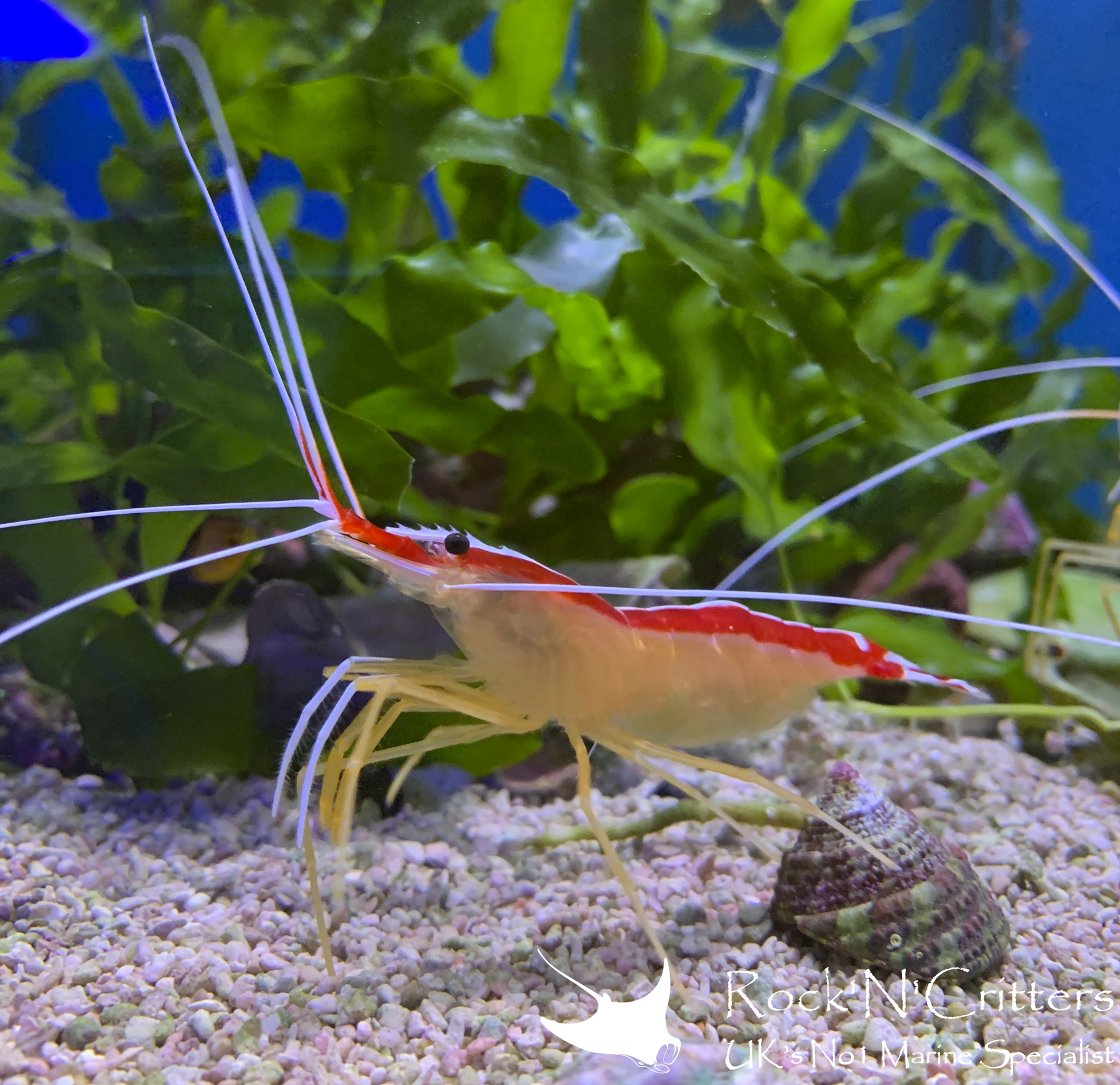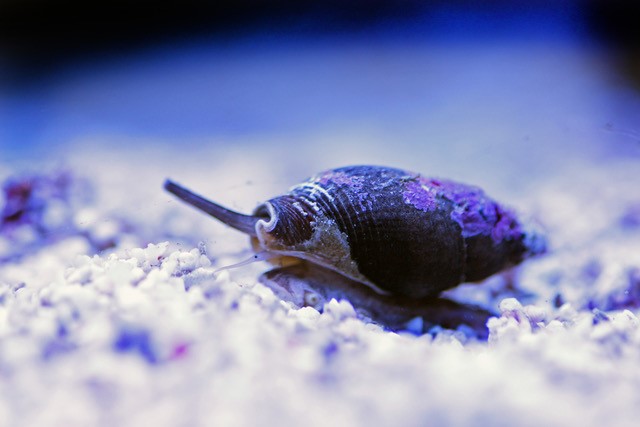
'What substrate should I have in my reef tank? Should I go bare bottom or deep sand bed? Gravel or sand, fine sand or course sand? What does it all mean, what should I do?' Let's look through what the substrates are, its function and what it means so that you can make the informed decision of what you want to do. Let's go.
In terms of substrate there are two main schools of thought, substrate versus bare bottom. The substrate school of thought revolves around having some sort of gravel or sand on the bottom of the aquarium. There are further discussions to be had though about sand vs gravel and the depth you should have the substrate but we'll get onto that. Having a substrate in the reef tank gives it a more natural look and generally, in my opinion, makes it look more appealing to the eye. The substrate also provides a biological purpose however. Some suppliers will state that it naturally buffers the aquarium water which it will initially but over time this will diminish because it is not being replenished and you shouldn't be replenishing your substrate on a regular basis really for the second biological benefit/reason so for that reason I'm always hesitant to overly rely on the 'buffering your water' point. The more important point is the second biological benefit/reason which is; over time your substrate will colonise with bacteria and algae that will help stabilise your reef tank. The substrate is really the largest surface area in the reef tank for bacteria to colonise so replacing this regularly will disturb this balance and potentially cause instability in your reef which is not what we want at all. However, you do want your sand bed to be 'turned over' regularly. The risk with substrate is that it sits at the bottom of your reef tank and layers begin to form in it, aerobic and anaerobic, dead spots and detritus zones. To avoid this you want to be turning the sand bed over so that it's getting mixed up and moved about regularly. Don't worry though, this isn't something you have to or should do yourself manually, you can get fish and critters to do it for you! This brings me onto the third benefit/reason for a substrate which is, it supports some fish and critters in the aquarium. Sand sifting gobies need a substrate to sift for food, sand sifting starfish need a substrate for the same reason as do Nassarius snails whilst some wrasse will sleep in the sand bed. This is sort of win win for you and the fish/critter, they get a sand bed to feed from/sleep in and you get the sand bed regularly 'turned over' for free!
 |
The substrate grade that this Nassarius snail is cruising over is a great example of a medium grade of sand/gravel.
As for type of substrate, it's really all about grade. Fine sand to course gravel. There is also mud but this is more for setups where you're keeping mangroves or an algae based tank. So let's stick with grades of sand/gravel. On the one end of the scale we have the really fine sand that looks and feels really nice, its the kind of stuff that features on that picture perfect holiday beach. It looks great but its so fine that its really susceptible to being blown about by the flow which if you're trying to keep SPS can become a headache. Finer sand generally means lower flow which also increases the risk of dead spots where detritus will settle and spoil the sand bed turning that pristine looking sand bed into a patchy, slightly dirty looking sand bed. It's also important to remember that whilst fine sand looks really nice for us, it's not what is naturally found under the natural reef. On the sand bed in the natural reef you'll find course sand and gravel with broken rock, rubble and coral skeleton so really a courser gravel is the more natural choice. On that note let's move up the scale to about half way where we have sand/gravel. This is characterised by having distinct grains, if I had to compare it to something then imagine cous cous and you're in the right ball park. This, for me is the sweet spot between fine sand and rough chunky gravel. The grains are heavier and so can handle higher flow but isn't too course for filter feeding fish to sift through or for wrasse to bury into etc. On the other end of the spectrum we have the heavy course gravel that is more like the stuff we'd find in the garden. This isn't any good for sand sifting fish and critters but it will be able to handle high flow. It's also popular in fish only tanks sometimes so if you're going down that route then its a good possible choice.
 |
Note how the sand bed on the reef here is course and made up of some rubble and broken shells, this is a natural example of substrate on the reef.
Another substrate discussion point is 'how deep should the sand bed be?'. This is grouped two ways; deep and shallow. A deep sand bed is about 2-3 inches deep and was really popular in old school reefing. The train of thought is that a deep sand bed has anaerobic and aerobic zones which can help assist the denitrification process. The shallow sand bed train of thought is the opposite, no anaerobic zones which stops the accumulation of 'bad stuff' getting locked into the sand bed which will ultimately be released in a plume of detritus whenever the deep sand bed gets disturbed. The shallow sand bed is about an inch deep, just enough to comprehensively cover the bottom of the aquarium to give an aesthetically pleasing look and enough real estate for those sand sifters and sleepers.
Whilst it looks really nice, this grade of sand is just going to get blown all over the place once you add flow to the setup.
The other school of thought as mentioned at the start is 'Bare Bottom'. This is when you have no substrate on the bottom of your reef tank at all, just bare glass... hence the term bare bottom. There is a clean aesthetic appeal to having a bare bottom tank although I think it does need cleaning/siphoning often to keep it looking good. Even the smallest bit of algae growth or detritus accumulation on a bare bottom is instantly visible whereas on a substrate it is kind of hidden and obscured. So whilst there are some really nice looking bare bottom tanks out there (on social media and the like), what we've not seen is the meticulous algae scraping and cleaning of that bottom to get it looking so good. In some experiments when establishing reef tanks it has been noted that tanks with bare bottoms take longer to stabilise and are somewhat less resilient than reefs with substrate, this is probably due to the amount of bacteria and algae that colonises a substrate which in turn helps stabilise a system. The main benefit though in my opinion of a bare bottom tank is flow. In a bare bottom you can crank the flow right up to the max and not have to worry about sand blowing all over the place or creating a sandstorm constantly. This is why when you do see bare bottom tanks they are almost always SPS dominated reef tanks that require more flow.
Now, as for what you should do, that's down to how you want to run your setup. My advice if you're just getting started is to go for a shallow sand bed with medium grade sand/gravel. It'll give your reef tank stability and a nice environment for your livestock. If you get bitten by the reefing bug then I can guarantee this will not be your first reef tank, so once you have built up some experience you could choose to go for a bare bottom or different grade of substrate, the world is your oyster!
Substrate is online and in store here now, have a look and get a feel for what you want to go for. Still not sure? Pop into the shop, have a look in person, touch and feel the options, have a chat to one of the team who'll happily walk you through what's available.